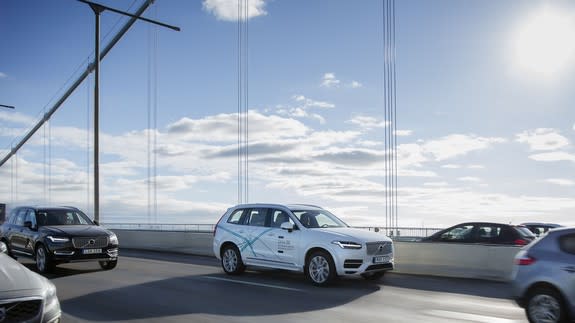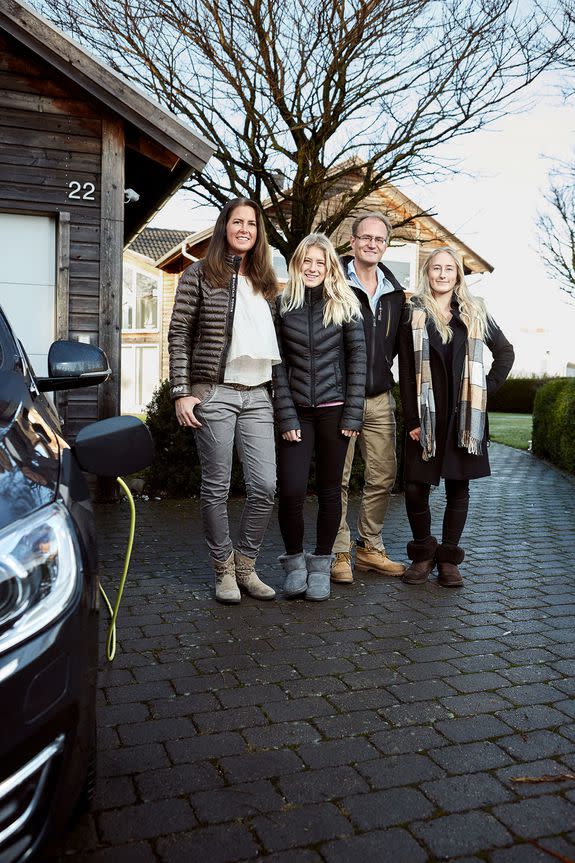Volvo's plan for self-driving cars focuses on ... the driver?

Starting this year, Volvo will take its autonomous driving program on the road — but the Swedish automaker's approach to developing its tech is a bit more intimate than most of its competitors.
Rather than rolling a fleet of self-driving cars out onto the streets of a city with contracted employees running the tests like Chevy or Ford, Volvo is leading off by handing the keys of an autonomous XC90 over to the Hains, a family in Gothenburg.
This isn't necessarily news — Volvo announced its plans for the pilot program as far back as last year — but the car company shared a few new details about the program and its greater autonomous driving strategy at the 2017 NAIAS Detroit auto show.
SEE ALSO: Alphabet's Waymo unveils its autonomous Chrysler minivan
The Hain family was selected because they drive a certain road in the region for their daily commute, which Volvo targeted in its use-case research. Their XC90 will be equipped with a special logging system in addition to the necessary sensors and cameras for self-driving tech, which will record video of the interior of the car to observe how the family interacts with it.

Image: volvo
“The aim of the Drive Me research project is to focus on how to enhance peoples’ lives and have a positive impact on society," said Volvo's Senior VP of Research and Development Henrik Green in a statement following the presentation. "We take a holistic rather than a purely technical approach to our research and development processes.”
After the Haims begin logging miles (or, in Gothenburg, kilometers) in the Drive Me car, the data will be used to expand the program to up to 100 vehicles by the end of 2017. Unlike most other self-driving cars, the Drive Me's autonomous tech (think sensors and cameras) are unobtrusive, with (relatively) subtle branding in an attempt to blend in on the road.

Image: volvo
You might remember seeing autonomous XC90s earlier this year in another context. The model was used for Uber's short-lived self-driving program in San Francisco before being shuttled over to Arizona after a DMV dispute.
According to Trent Victor, a member of the Drive Me team who spoke with Mashable over the phone following the presentation, the Uber XC90s and Drive Me XC90s run on completely different systems. Uber is simply using the platform to develop its own ride-sharing control software, while Volvo has its own in-house autonomous software, which it will use for the Drive Me program.

Image: volvo
"Within our autonomous driving system, we have three pillars," Victor told Mashable. "One is developing the hardware — we do that with Uber. Another is the software. With Autolive [an automotive safety supplier], we've made a company called Zenuity, which will be developing autonomous driving functionality and the crash avoidance technology for auto-braking. The third pillar is the Drive Me program, which is about understanding user experience. We want to become driver-centric and understand what people want to do and how they're using the system."
Victor describes a self-driving system that rolls three modes into the experience: a driving mode, a relaxation mode, and a work mode, which would be where the automaker's recently announced integration of Skype for Business could really shine.
"We're a user-centric company, and we believe there needs to be more of a focus on how people will be using these systems in reality rather than this [autonomous driving development] just being a tech race. We're focusing very much on offering this to advance peoples' lives."
Even if Volvo isn't focusing on the race, it has clearly marked its own finish line: the company has set 2021 as the year it intends to have its first fully autonomous car on the market. If it has to rush, though, the Swedish automaker has made it clear that it will still be a comfortable ride.

 Yahoo News
Yahoo News 